Sago Server Benchmarks
by admin on Dec.30, 2008, under Sago Labs
For some time I have wanted to benchmark our Sago servers. This is the only way to know what servers are best suited for certain applications, and I am very happy to say this has now been done.
Sago Labs is pleased to announce an exciting new project now available to you. This can help existing Sago customers and well as those considering getting dedicated servers with us.
We have now made available detailed benchmarks on on performance class servers and a knowledge base article anyone can use to use the same benchmark tools we used. This way you can compare your existing server to our results, determine which server best suits your needs, and learn more about performance benchmarking.
For details on how to use the benchmarking tool Phoronix Test Suite and more information on the benchmarks we ran, please see the knowledge base article. Additional information on this benchmark suite can also be found at the official Phoronix site.
In the upcoming weeks we will benchmark our Enterprise Class servers as well, in addition to providing additional information on our Performance Class.
Benchmarks Results Online
Benchmarks results of our servers can be found on line at the Phoronix web site, under the SagoLabs account. You may view them at:
http://global.phoronix-test-suite.com/?k=author&u=SagoLabs
And our RSS feed is at:
http://global.phoronix-test-suite.com/rss.php?a=sagolabs
Sago Server Comparisons
While the full benchmark reports are available at the above links, it is nice to have graphs which compare different servers. That way you don’t have to flip back and forth between many browser tabs. To make that easier we have selected some key results and here you can see all our performance class servers and how they compare to each other. Please note that one bargain class server, is also included – the Bargain Dual Xeon 2.8 for reference as well. Also there are results for both the 2.8 and 3.0 version of our Performance P4 system.
Here are graphs of some key benchmarks starting with some compile times for Apache and PHP.
Unsuprisingly the Dual and Quad Core AMD are the undisputed chapms, while the Performance Dual Xeon was quite close to the Dual Core AMD:
Next are some computationally intensive test results:
(More information on Dhrystone 2 can be found on Wikipedia.)
Scimark provides a good overview of raw computational performance:
Of course raw power is fine, but IO bottlenecks still bring a sever to its knees. Here are a few IO test results. We will add more tests in the near future (Bonnie++, hdparm, etc.):
(The SQLite test results are quite interesting as the fastest servers are showing the longest time to perform the test – inserting 12,500 SQL inserts. I will be testing this further to validate these results.)
Please note: the results of many more tests can be found for each server on line. The above were simply excerpted from the full battery of benchmarks performed.
Compare Your Servers to Ours!
One of the great tools included with the Phoronix Test Suite is the ability to compare your results to those of a reference server. All you have to do is run the test suite on your server with the option to compare results to another. For example, the following would benchmark your server and compare the results to our Performance P4D server:
#phoronix-test-suite benchmark sagolabs-22678-29826-31145
What Server Should I Get?
That is an excellent question. Reviewing these benchmarks will help narrow down the best servers for your need. However, there are other factors beyond just raw computational power. If you need a server with hardware RAID, gigabit NICs, etc. you will want to check with us. Not all servers support these type options, so if you have any question after reviewing the benchmarks please contact us and we will be happy to assist you in making your sever selection.
Leave a Reply
You must be logged in to post a comment.
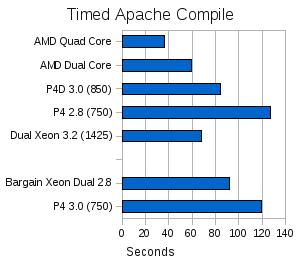
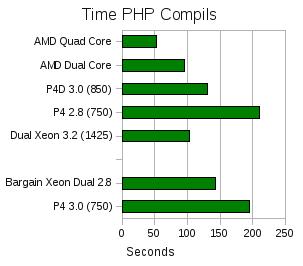
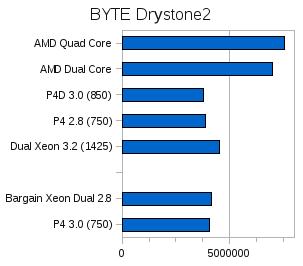
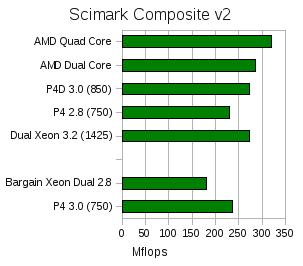
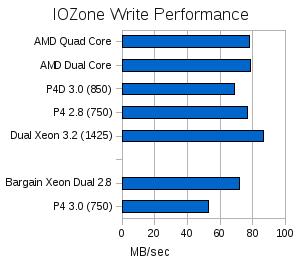
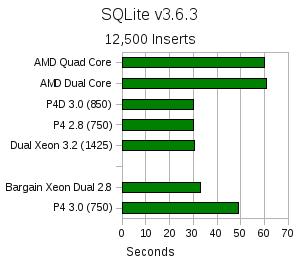
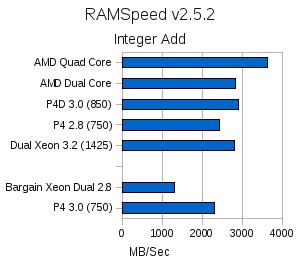
December 30th, 2008 on 4:17 pm
I wonder what gcc arguments were being sent, can you publish this? Gcc was probably compiling 1 thing at a time. You would use the -j argument to make it compile things in parallel. (like -j4 to take advantage of hyperthreading + dual processors)
December 30th, 2008 on 10:49 pm
Hi Kyle,
Excellent question. Information about tests can be obtained using:
[root@server ]# phoronix-test-suite info compilation
Unless you have changed the test template, the default compile settings will be used. In our Sago Labs tests we used the unmodified tests, and as such the blow applies.
====================================
Timed Code Compilation
====================================
Suite Version: 1.0.0
Maintainer: Michael Larabel
Suite Type: Processor
Unique Tests: 3
Suite Description: This test suite consists of tests that measure the amount of time needed to buildcommon open-source software packages. These tests will use your default compiler (likely GCC) and will adjust the number of compiling jobs based upon the number of detected CPU cores in your system. This suite is good for testing the system’s processor, memory, and overall system performance.
compilation
* build-apache
* build-php
* build-imagemagick
***********************
Also, you can view the install script for each test to verify the make command being used. For example:
cat /usr/share/phoronix-test-suite/pts/test-resources/build-apache/install.sh
#!/bin/sh
echo “#!/bin/sh
rm -rf httpd-2.2.8/
tar -xvf httpd-2.2.8.tar.gz
cd httpd-2.2.8/
./configure > /dev/null
sleep 3
\$TIMER_START
make -s -j \$NUM_CPU_JOBS 2>&1
\$TIMER_STOP” > time-compile-apache
chmod +x time-compile-apache